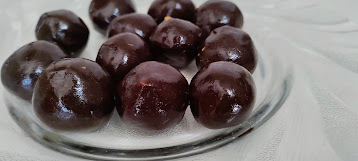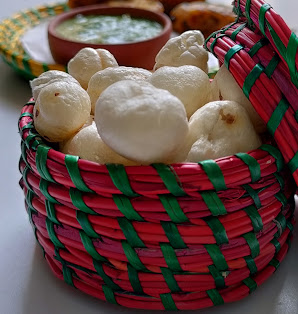Ragi Ladoo recipe with jaggery
What is Ragi?
Ragi, scientifically called Eleusine coracana, is an annually cultivated cereal crop, vastly found in the tropical regions of Africa and Asia, such as in Ethiopia, India, And Sri Lanka. . finger millet, also known as ragi in India, and Kodo in Nepal, is an annual herbaceous plant widely grown as a cereal crop in the arid and semiarid areas in Africa and Asia. It is a tetraploid and self-pollinating species that probably evolved from its wild relative Eleusine Africana
In India, ragi is mostly grown and consumed in Rajasthan, Karnataka, Andhra Pradesh, Tamil Nadu, Orissa, Maharashtra, the Kumaon region of Uttarakhand, and Goa; of which, Maharashtra, Tamil Nadu, and Uttarakhand produce the bulk of ragi in the country.
Karnataka is the top producer of ragi in India. In Karnataka, ragi growing areas are concentrated in the southern maidan. Tumakuru district is the leading producer of ragi, followed by Ramnagar, Bengaluru Rural, Hassan, Mandya, Kolar, Chikballapur, Shivamogga, Chikkamagaluru, Chamarajnagar, and Davanagere districts
What Happens if I eat ragi daily?
Regular consumption of ragi can help reduce your risk of diabetes. This is because polyphenols and dietary fibres are prevalent in ragi. Ragi has huge amounts of fibre when compared to other whole wheat grains. Consuming ragi regularly lowers the level of blood sugar and stabilizes your sugar level.
What happens if I eat too much ragi?
A high intake of Ragi could increase the amount of oxalic acid in the body. Therefore, it is not recommended for patients having kidney stones (urinary calculi), constipation, diarrhea, and thyroid. It can react negatively to them.
Which is better sprouted ragi flour or plain flour?
Sprouted ragi flour a.k.a sprouted finger millet flour has increased protein, dietary fiber, and enhanced iron bioavailability when compared to plain ragi flour.
How to store Ragi Flour?
Store Ragi flour and millet in an airtight container in a cool and dry place. If required it can be stored in the refrigerator in an airtight container to increase the shelf life of the flour.
Benefits of Ragi
1. Rich in protein: Ragi is an excellent vegan source of protein. 100gms of Ragi provides 13gm of protein.
2. Rich in Calcium: 100 gms of Ragi is enough for fulfilling 49% of our body’s daily calcium needs. Ragi also contains phosphorus, which works with calcium to strengthen your bones and teeth. Regular consumption of Ragi helps keep osteoporosis at bay and reduces the risk of fracture.
3. Rich in Iron: Ragi is a very good source of natural iron. Ragi-based foods are highly suited for pregnant and lactating mothers and the elderly too due to their high calcium and iron content.
4. Rich in Antioxidants: Ragi is loaded with antioxidants that help your body fight against free radicals and thus slow down ageing. Antioxidants also help reduce the risk of Cancer considerably.
5. Good for Diabetics: Ragi is rich in Magnesium content. Magnesium lowers our body’s insulin resistance and thus helps maintain blood sugar levels.
6. Gluten-free: Ragi, being gluten-free, is an excellent option for people with Gluten-sensitive enteropathy or celiac disease. Also, it is a widely consumed grain for fitness freaks or those looking to make healthy food choices.
7. Great for Digestion: Ragi is rich in both soluble and insoluble fiber. This fiber helps keep us full for longer hours, thus relieving constipation.
8. Ragi helps in relaxing the body naturally. It is beneficial for conditions like blood pressure, anxiety, depression, migraines, liver disorders, asthma, and heart weakness.
9. An excellent weaning food Because of its high nutritional content, Ragi is considered an excellent weaning food. It is the first fed cereal to infants.
10. Good for hair age helps prevent hair loss. Ragi is also said to prevent premature greying of hair. This is usually caused due to oxidation of tissues, and the antioxidants present in Ragi will effectively prevent damage to tissues, thereby reducing grey hair possibility.
How can Ragi be used?
Being available both as nutrient-dense grains as well as processed flour, ragi can be easily utilized to make staple desi dishes like dosas, rotis, idlis, upma, puttu, parathas, adai as well as desi mithais like halwa, barfi, etc
Benefits of Jaggery or gur
Jaggery or Gur helps in purifying the blood, and also helps in fighting colds and flu. It keeps our liver healthy and fights constipation. Jaggery or Gur is rich in iron so it also helps to increase blood in our body. It also prevents a burning sensation in the Stomach. It also helps to keep the intestine healthy and prevent joint pain also. It also keeps your energy level high. If you want to lose weight, then included jaggery in your daily diet instead of sugar.
Recipes with Ragi
Ragi Dosa
Ragi Roti
Ragi Idli
Ragi Appe
Ragi Halwa
Ragi eggless chocolate cake
Ragi Ladoo
Ragi Cookies
Ragi porridges for baby
Ragi malt
Ragi mudde and many more
So, Today I share two ways of making Raggi ladoo
Ingredients for Ist recipe
Ragi flour - 125 gm or 1/2 cup
Jaggery cubes -75 gm
Water -1 cup
Ghee -3-4 tbsp
Cardamom powder -1/4 tsp
Roasted white sesame seeds (optional)-2 tsp
How to make
- Firstly, roast ragi flour in 1 Tbsp of ghee in a heavy bottom utensil like kadhai. Keep aside
- Now, in the same kadhai dry roast white sesame seed. Keep aside
- Now, take 1 tsp of ghee and roast cashew nuts.
- Now, add 1 cup water and add jaggery.
- When jaggery melts, add 2 Tbsp ghee.
- Cook the jaggery syrup till it reduces to half.
- Now, add jaggery syrup in roasted ragi powder in small batches. Do not mix all the jaggery syrup together.
- Now, make ladoos when the mixture is warm.
- Healthy and nutritious ladoos are ready.
- When you make ladoos through this process ladoos become soft.
- First, the three steps are the same as above.
- In a big mixing bowl, add roasted ragi powder, cardamom powder and roasted cashew nuts.
- Add 1/4 cup of jaggery powder. You can adjust sweetness according to your taste.
- Add 4 tbsp melted ghee and mix well all the ingredients. If you feel the mixture is too dry then adjust the quantity of ghee according to your choice.
- Now, make ladoos.
- Ladoos are ready.
Pls check out my other ragi recipes
Ragi cookies
Ragi Kachori





Unimaginably strong which you have shared here. I'm charmed by the nuances and besides it is a basic article for us. Continue to give such an information, Thank you.best indian takeaway near me
ReplyDelete